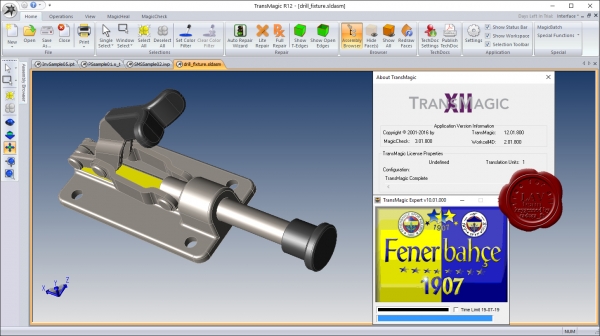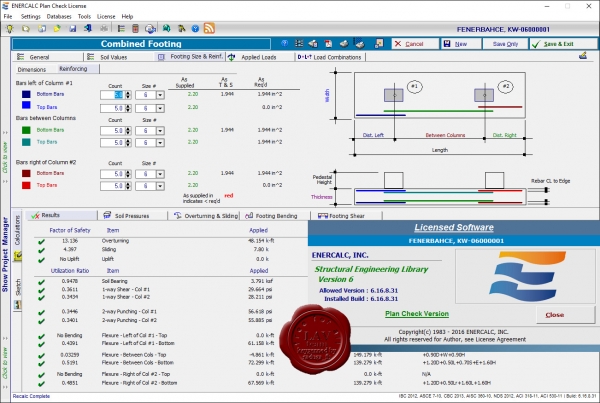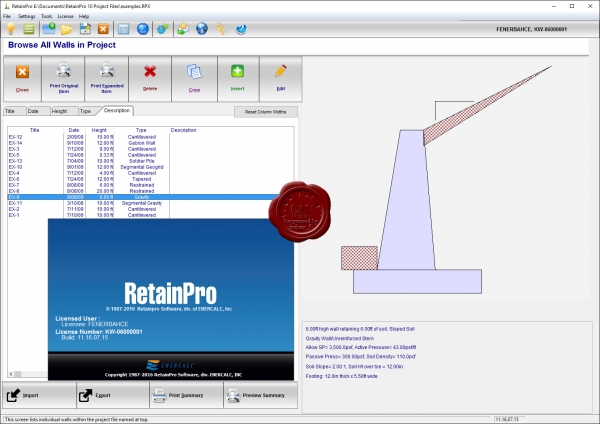|
 |
 Автор: Williams Автор: Williams
 Дата: 23 октября 2016 Дата: 23 октября 2016
 Просмотров: 746 Просмотров: 746 |
| |
TransMagic Complete R12 SP0.1 v12.01.800

TransMagic является провайдером самостоятельных CAD инструментов для трансляции данных. Флагманский продукт компании - TransMagic Coplete обновлен до версии R12. Дополнительно к уже существующим CAD трансляторам была добавлена совместимость с CATIA V5. TransMagic обладает функциями трансляции и восстановления файлов CATIA V5. Программа позволяет осуществлять прямую трансляцию данных, причем быстро и эффективно, а также исправлять эти данные и просматривать 3D CAD файлы из CATIA V5, CATIA V4, Unigraphics, Pro/ENGINEER, STEP и IGES, а также сотен приложений ACIS и Parasolid, например, SolidWorks и Inventor, через формат SAT и X_T. |
| |
 Читать статью дальше (комментариев - 7)
Читать статью дальше (комментариев - 7)
| |
|
 |
 Автор: Williams Автор: Williams
 Дата: 22 октября 2016 Дата: 22 октября 2016
 Просмотров: 5 887 Просмотров: 5 887 |
| |
ENERCALC Structural Engineerin Library v6.16.8.31 + RetainPro v11.16.07.15


ENERCALC provides Structural Engineering Library since 1983 when it was released first set of 26 Lotus 1-2-3 templates. Although it goes by one name, the Structural Engineering Library is actually dozens of structural engineering design and analysis modules all in one system. It provides the practicing engineer with a large toolkit of capabilities to design the elements of structures and also provides an environment to develop sets of project engineering calculations that contain non-ENERCALC items such as EXCEL spreadsheets, WORD documents, PDF files, scanned images, and general project information. The Structural Engineering Library is a versatile toolkit for the practicing engineer. Small projects of 5 stories or less dominate the structures built nationwide and this is where our software excels. A frame analysis program has its place but all structures require design and analysis of dozens or hundreds of smaller elements that make up the building project. The Structural Engineering Library provides structural capabilities for all common design tasks in steel, concrete, masonry, timber and dozens of other design modules.
Retain Pro designs and analyzes nearly any cantilevered or restrained retaining wall, concrete or masonry, with just about any configuration and loading condition. Segmental retaining walls too!
|
| |
 Читать статью дальше (комментариев - 34)
Читать статью дальше (комментариев - 34)
| |
|
 |
| ПОИСК ПО САЙТУ |
 |
|
 |
| КАЛЕНДАРЬ | | |
 |
| « Октябрь 2025 » |
|---|
| Пн | Вт | Ср | Чт | Пт | Сб | Вс |
|---|
| | 1 | 2 | 3 | 4 | 5 | | 6 | 7 | 8 | 9 | 10 | 11 | 12 | | 13 | 14 | 15 | 16 | 17 | 18 | 19 | | 20 | 21 | 22 | 23 | 24 | 25 | 26 | | 27 | 28 | 29 | 30 | 31 | |
|
 | |
| |
|